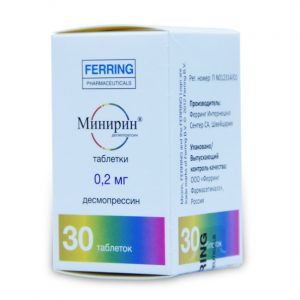Description
Latin name
Thioctacid
release form
film-coated tablets
Packing
In a bottle of 30 tablets. In the package 1 bottle.
Indications
Neuropathy of various origins, including diabetic and alcoholic polyneuropathies, polyneuropathies with systemic lesions of the connective tissue, lesions of the facial nerve. Cerebral infarction. Parkinson’s disease. Diabetic retinopathy and diabetic macular edema. Glaucoma. Acute viral hepatitis C mild. Acute viral hepatitis A (without hepatic coma) of severe severity. Acute viral hepatitis C of moderate severity. Lesions of the intervertebral disc and other parts of the spine with radiculopathy. Other conditions accompanied by damage to cells of tissues and organs by free radicals
Contraindications
Hypersensitivity to thioctic acid or other components of the drug. Pregnancy, the period of breastfeeding (there is no sufficient experience with the use of the drug). Clinical data on the use of the drug Thioctacid ® BV in children and adolescents are not available, therefore, children and adolescents under 18 years of age should not be prescribed the drug
Use during pregnancy and lactation
Use of the drug during pregnancy is contraindicated in the absence of sufficient clinical experience with thioctic acid during pregnancy. The use of the drug during breastfeeding is contraindicated in the absence of data on the penetration of thioctic acid into breast milk.
Composition
1 film-coated tablet contains:
Active ingredient: thioctic acid (? -lipoic acid) – 600 mg
Excipients: low-substituted hyprolose 157.00 mg, hyprolose 20.00 mg, magnesium stearate 24.00 mg.
Film coating: hypromellose 15.80 mg, macrogol 6000 4.70 mg, titanium dioxide 4.00 mg, talc 2.02 mg, dye-based quinoline yellow varnish 1.32 mg, indigo carmine-based varnish 0.16 mg
Dosage and administration of
The drug is taken orally. Strictly on an empty stomach 20-30 minutes before a meal, without chewing, washed down with water. The recommended dose is 1 tablet (600 mg) 1 time per day. In severe cases, stepwise therapy is recommended for greater effectiveness: the start of treatment is the intravenous administration of the drug Tioktatsid ® 600 T, a solution for intravenous administration (2-4 weeks), followed by transfer of the patient to the drug Tioktatsid ® BV.
If intravenous injection is not possible, it is recommended to use the drug Thioctacid ® BV, 1 tablet (600 mg) 3 times a day (which is equivalent to the intravenous injection of the drug Thioctacid ® 600 T) on an empty stomach 30 minutes before meals for 5 days and then prescribedju doctor. The type and duration of the course of therapy is determined by the attending physician
Side effects
The frequency of side effects is defined as follows:
Very often:> 1/10
Frequently: 1/100
Infrequently: 1/1000
Rarely: 1/10000
Very rarely:
From the gastrointestinal tract : Often – nausea is very rare – vomiting, pain in the stomach and intestines, diarrhea, change in taste.
Allergic reactions: Very rarely – skin rash, urticaria, itching, anaphylactic shock.
From the nervous system and sensory organs: Often – dizziness.
General: Very rare – due to improved glucose utilization, blood glucose levels may decrease and symptoms of hypoglycemia (confusion, sweating, headache, visual disturbances) may appear.
Drug Interaction
At the onset of HRT, hormonal contraceptives should be discontinued. If necessary, the patient should be recommended non-hormonal contraceptives.
Long-term treatment with drugs that induce liver enzymes (e.g.
Diprospan ® may enhance the elimination of potassium caused by amphotericin B.
Dose adjustments (due to the risk of overdose) may be required with the use of ACS and estrogens.
Concomitant use of ACS and cardiac glycosides increases the risk of arrhythmia or digital intoxication (due to hypokalemia).
When combined use of GCS with NSAIDs, with ethanol or ethanol-containing drugs, it is possible to increase the incidence or intensity of erosive-ulcerative lesions of the gastrointestinal tract.
When used in combination, GCS can reduce the concentration of salicylates in blood plasma.
Concomitant administration of GCS and somatotropin may delay the absorption of the latter (betamethasone should be avoided at doses exceeding 0.3-0.45 mg / m2 body surface per day).
Overdose
Symptoms: In the case of receiving thioctic ( -Lipoic) acid in a single dose of 10 – 40 g (more than 16 tablets of 600 mg), signs of intoxication (generalized convulsive seizures expressed disorders of acid-base balance, leading to lactoacidosis, hypoglycemic coma seizures)).
Immediate hospitalization is required if thioctic acid intoxication is suspected.
Treatment: symptomatic, if necessary – anticonvulsant therapy, measures to maintain the functions of vital organs
Storage conditions
The drug should be stored at a temperature not exceeding 30 ° C.
Expiration
5 years.
Meda Farma GmbH and Ko.KG, Switzerland4194




